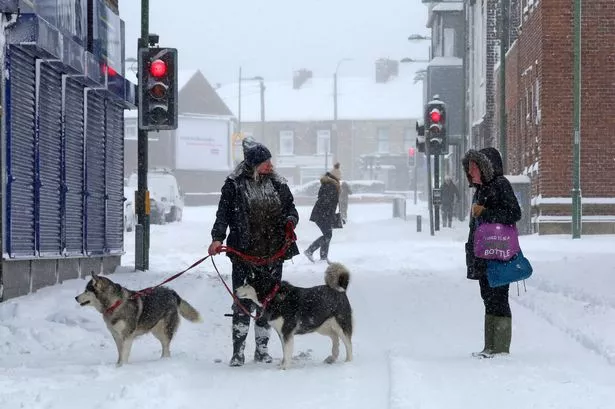The impending arrival of snow on New Year’s Day, coupled with a significant temperature drop in the following days, marks a dramatic shift from the unusually mild Christmas Day experienced across many regions. This sudden transition from balmy holiday weather to wintry conditions underscores the inherent volatility of weather patterns, particularly during the transitional period between late December and early January. This shift is likely driven by a change in prevailing air masses, with milder, subtropical air being replaced by colder, arctic air. The contrast serves as a stark reminder of the powerful forces that govern our climate and the challenges of accurately forecasting weather events, especially over longer timeframes. The anticipated snowfall and plummeting temperatures will likely impact various aspects of daily life, including transportation, infrastructure, and outdoor activities, requiring individuals and communities to adapt and prepare for the changing conditions.
The transition from mild Christmas temperatures to freezing, snowy conditions on New Year’s Day signifies a significant meteorological shift, typically driven by the movement of large-scale weather systems. The milder Christmas weather likely resulted from a dominant high-pressure system, often associated with warm, stable air. This type of system can trap warmer air near the surface, leading to unseasonably mild temperatures, especially during the winter months. However, the arrival of snow and colder temperatures indicates the arrival of a low-pressure system, which is characterized by rising air and often associated with precipitation. The shift to a low-pressure system allows colder, denser air from higher latitudes, such as the Arctic region, to move southward, displacing the warmer air and bringing significantly colder temperatures. This dynamic interplay of high and low-pressure systems, along with the associated air masses, drives the variability in weather patterns and explains the rapid transition from mild to wintry conditions.
The forecast of snow and significantly colder temperatures necessitates preparation across various sectors. Transportation infrastructure, including roads and airports, will need to be prepared for winter weather conditions. Road crews will likely pre-treat roads with salt and other de-icing agents to prevent hazardous driving conditions. Airlines may experience delays and cancellations due to snow and ice accumulation, impacting travel plans for many. Furthermore, the colder temperatures can pose risks to vulnerable populations, such as the elderly and homeless individuals. Local authorities and community organizations should activate cold weather protocols to ensure the safety and well-being of these individuals. The energy sector also faces increased demand during cold snaps, requiring power grids to operate at peak capacity to meet heating needs.
The sudden shift in weather conditions highlights the importance of accurate and timely weather forecasting. Meteorologists utilize various tools and technologies, including weather models, satellite imagery, and surface observations, to monitor and predict weather patterns. However, forecasting remains a complex science, and predicting sharp transitions in weather can be particularly challenging. The accuracy of forecasts diminishes with longer lead times, making it difficult to definitively predict weather conditions weeks in advance. As a result, it is crucial for individuals and communities to stay informed about evolving weather forecasts and to be prepared for potential changes in conditions. This includes monitoring weather reports regularly, stocking up on essential supplies, and making contingency plans in case of severe weather.
The contrast between the mild Christmas Day and the anticipated snowy New Year’s Day emphasizes the dynamic nature of weather systems and the importance of understanding the factors that influence these changes. The Earth’s climate is a complex system driven by a multitude of factors, including solar radiation, atmospheric circulation patterns, and ocean currents. These factors interact in complex ways to produce the weather patterns we experience. Climate change, driven primarily by human activities, is further influencing these patterns, leading to more extreme weather events, including heatwaves, droughts, and intense precipitation events. Understanding the interplay of these factors is crucial for predicting and mitigating the impacts of changing weather patterns.
The projected snowfall and temperature drop around New Year’s Day not only represent a shift in weather patterns but also serve as a reminder of the interconnectedness of weather, climate, and human activity. Adapting to these changes requires individual and collective action. This includes preparing for extreme weather events, investing in resilient infrastructure, and reducing greenhouse gas emissions to mitigate the long-term impacts of climate change. The contrast between the mild Christmas and the wintry New Year underscores the need for ongoing vigilance and preparedness in the face of a changing climate. It highlights the importance of staying informed, adapting to changing conditions, and working towards a more sustainable future.














